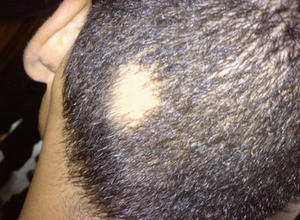
Asian American, Black, and Hispanic patients may have a higher prevalence of alopecia areata (AA) and its subtypes, according to a recent cross-sectional study.1
An inflammatory skin disorder, alopecia and its subtypes (alopecia totalis and alopecia universalis) may lead to nonscarring patches of hair loss or even loss of scalp or body hair.
Key Highlights
- A cross-sectional study of electronic health records from 2019 found a significant burden of AA, AT, and AU in the US
- The age-and-sex standardized prevalences among adults and children/adolescents were 0.18% and 0.10%, respectively
- Prevalence was highest in those aged 30-49 and in Asian patients, followed by patients reporting another race/multiple races, Black, and Hispanic/Latino patients
- Patients of color, particularly Asian Americans, appear to be disproportionately affected by AA
Its prevalence, dramatic effects on life quality, and lack of data on demographic prevalence are the reasons for the investigators’ research in this topic. This study was authored by Nene Sy, BS, from the Department of Dermatology at Northwell Health in New York.
“The purpose of this study was to estimate overall prevalence of AA in the health care seeking population, as well as in specific demographic groups in the US,” Sy and colleagues wrote. “We also aimed to estimate overall and subgroup prevalence of AT and AU.”
The investigators conducted a cross sectional study with data collected from the Explorys database. This is a multi-health system research platform containing electronic medical record data of around 53 million unique patients from 4 different census regions in the US.
The research team’s data concerned adults and adolescents, with data collection being drawn from the period between January of 2019 and December of 2019 and statistical analysis being done between July of 2022 and December of 2022.
The investigators included patients who had at least a single healthcare encounter at a participating institution in…
Read the full article here




